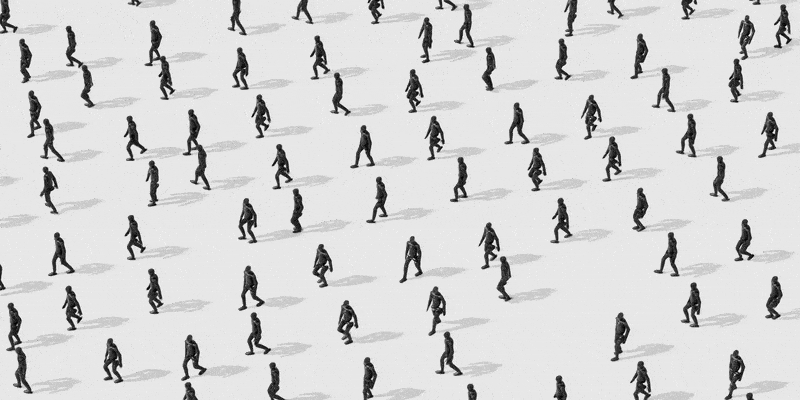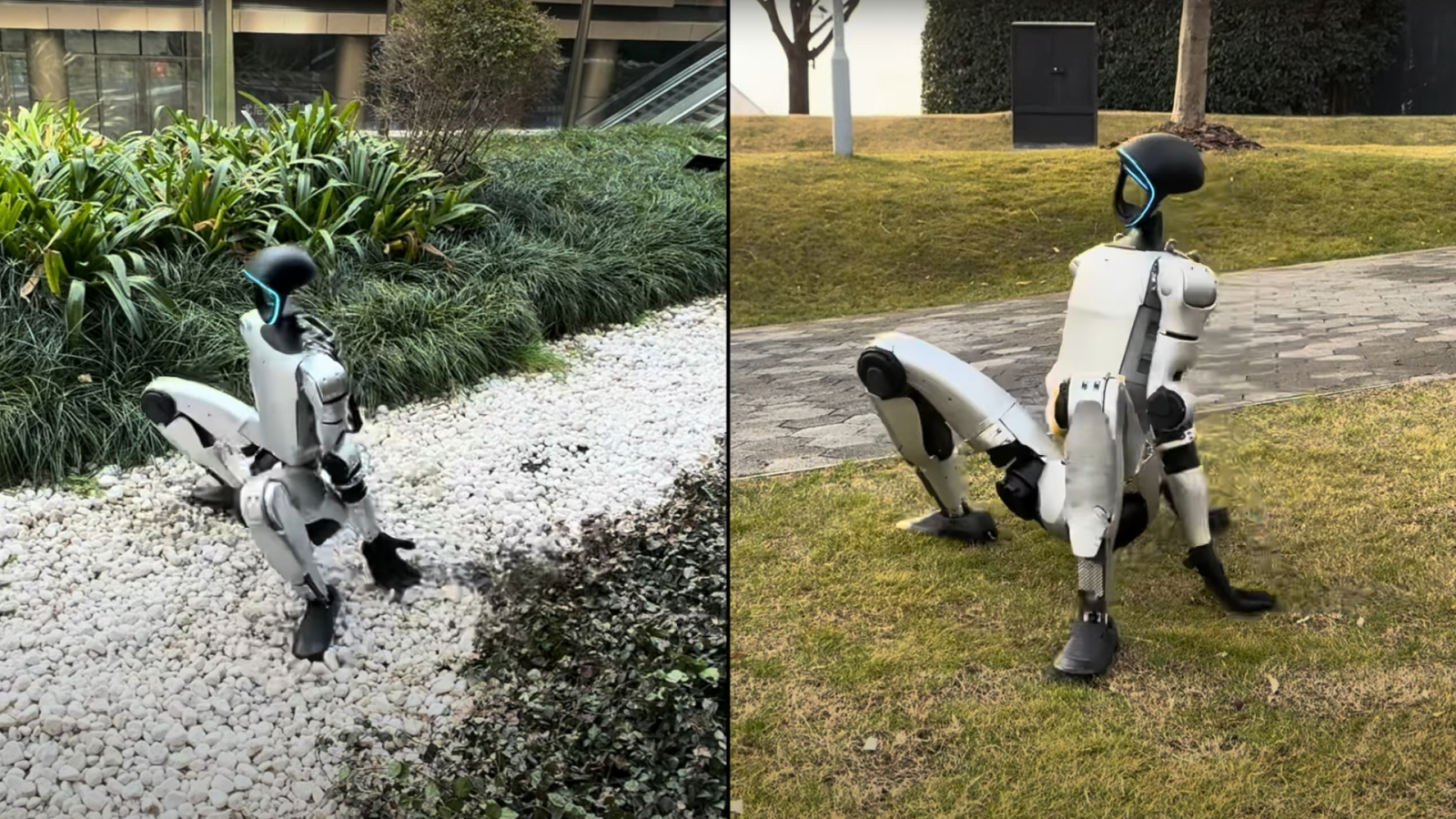When you buy through link on our situation , we may earn an affiliate deputation . Here ’s how it works .
Few engineering have get the human imagination in quite the same way as automaton . The idea of machines that can walk and talk like us has been a staple of science fable for decades . The reality has been more humdrum — most real - world robots are disembodied weapons system relegate to obtuse and repetitive mill piece of work . But recent breakthrough in both artificial intelligence ( AI ) and robotlike hardware mean that the saucy , mechanical man of our imaginations are getting ever faithful to realness .
Here are 12 of the most important milestone that pay back us here .

1921 — Invention of the term “robot”
Since antiquity , people had envisage the possibility of artificial humans — from the stiff Golems of Jewish folklore to the mechanical servants of the Greek god Hephaestus . History is also littered with examples of complex automata design to wow consultation with their life - like movements . But the countersign " robot " was first introduced by the Czech author Karel Čapek in his 1921 playR.U.R. , which stands for Rossumovi Univerzální Roboti ( Rossum ’s Universal Robots ) . The terminal figure is derived from the Czech Bible " robota , " which means thrust labor , and the play sport stilted actor made of synthetical organic matter that rise up against their human master — a narrative that would be echoed in many late works .
1942 — Isaac Asimov’s Three Laws of Robotics
Robots became a democratic scientific discipline fiction figure , with legendary source Isaac Asimov featuring them prominently in many of his story . A major melodic theme of his work was how these artificial humankind would interact with human lodge . In his 1942 myopic story " Runaround " he introduced the Three Laws of Robotics , which were supposed to govern how all automaton in his fictitious universe operated . The first law of nature veto the robots from harming humans , the second mandated robots to obey humans unless it violated the first law , and the third range the machine to protect themselves as long as that did n’t conflict with the two other police . While entirely fictional , Asimov ’s three law were influential on the development of ethical frameworks for AI and robotics .
1961 — The first industrial robot
It did n’t take long for idea from skill fable to separate out through to the real earth . In the other fifties , successive artificer George Devol begin piece of work on a robotic arm that could perform repetitive tasks in factories . He team up up with enterpriser Joseph Engelberger to take shape Unimation , the creation ’s first robotics company , and in 1961 their Unimate robotwent to workon the assembly line of descent at a General Motors plant life in New Jersey . The hydraulicly - powered arm had five degrees of exemption ( DoF ) — a measurement of manual dexterity that means its branch could move or go around in five different directions . Programming the machine required the exploiter to physically move the arm to different positions to teach it the ask chronological succession of action mechanism , which was then recorded in a magnetic store gimmick known as a drum memory .
1966 — World’s first intelligent mobile robot
While meaning progress had been made on the mechanical capabilities of robots by the mid-1960s , they were still essentially dumb car that require to be programme by hand . In 1966 , investigator at the Stanford Research Institute started piece of work on a wheeled robot with cameras and touch sensors that could reason out about its actions , make plan and navigate the actual world . It could move between multiple rooms autonomously , avoiding obstacle , opening room access , riff light-headed electric switch and pushing box around . The golem , which the squad named " Shakey , " received meaning media attention — in 1970 — Life magazine publisher even mention to it as thefirst electronic person . “Akey advancebehind the robot was its superimposed software architecture , which enable it to reason through tasks , something replicated in many subsequent robots .
1969 — The Stanford Arm spawns a new industry
While the Unimate was the first robotic weapon system to go into yield , the Stanford Arm became the blueprint for the emerging industrial robotics industry . plan in 1969by Victor Scheinman , who was then a student in the Stanford Artificial Intelligence Lab , the six - DoF weapon was electrically power and check by a computer . Over the following yr Scheinman work up increasingly sophisticated versions of the branch at both Stanford and MIT , before eventually starting a company holler Vicarm Inc. in 1974 to commercialize his work . He terminate up selling his conception to Unimation in 1977 , which liberate the Programmable Universal Machine for Assembly ( PUMA ) robot in 1978 . The initial customer was General Motors , which used it toassemble automotive subcomponents .
1970 — First robotic rover sent to the Moon
The nativity of robotics overlapped with another major technological leap — the Second Advent of the Space Age . Scientists recognized that machines that could be check remotely or even operate autonomously could be a powerful tool for explore thesolar system . In 1970 , the Soviet Union landedLunokhod 1 , the world ’s first robotic wanderer , on the lunation . Shaped like a bathtub and with eight severally powered wheels , the scouter could be controlled remotely from Earth via antenna and a feed from four cameras . The solar - powered vehicle operated for almost a year , roughly three and half times longer than it was designed to last , and travelled 6.5 miles ( 10.5 kilometers ) . It also used extendible probe to gestate out more than 500 tests on the mechanical prop of lunar soil .
1990 — Rodney Brooks rewrites AI for robotics
By the eighties , industrial robots that could bear out repetitive tasks in control environments had become trite , but endeavor to make more compromising and self-directed machines were foundering . Australianroboticist Rodney Brookshad the hunch that this tableland was due to the top - down coming researchers were take . This take a focus on imbuing machines with abstract logical thinking skills and developing complex system of mathematical symbol to lay out the world around them . Instead , he took inspiration from nature and focused on the feedback loops between sensing and action mechanism that enable sophisticated demeanour in animals . He march that by taking this bottom - up approach , outline in the 1990 paperElephants Do n’t represent Chess , it was possible to combine multiple simple behavioural modules to solve challenges beyond the robots that existed at the clip .
1996 — Honda unveils first humanoid walking robot
Despite considerable progress in robotics , most machines were a far cry from the mechanically skillful people depicted in sci - fi . That change in 1996 when Honda unveiled itsP2 automaton , which was the first android robot adequate to of walk independently on two leg . The company had start up working on the job of bipedal locomotion in the later eighties by studying , and trying to replicate , how humanity walked . Research on P2 and its successor P3 and P4 eventually culminated in the developing of the company ’s iconic ASIMO humanoid robot , which was unveiled for the first time in 2000 and jell the standard for humanoid robotics go forward .
2000 — The da Vinci surgical robot cleared by the FDA
While most commercial robotics party focused on machines designed to replace brute labor in factories , Intuitive Surgical decided to focus on the delicate operation of minimally invasive surgery . They build a four - armed automatic surgical system calledda Vincithat could be ascertain remotely by a surgeon . The blazon were capable of accommodate operative instrumental role like scalpel , graspers and scissors hold and activate the surgeon to comport out extremist - accurate drift . The equipment was cleared for use by the U.S. Food and Drug Administration in 2000 and has been used in more than14 million procedure .
2010 — Google unveils self driving car project
There had been scattered experiments in autonomous vehicle over the years , but the first company to commit serious resources to the idea was Google . The firm began develop self - driving cars in 2009 and drove more than 140,000 mile on public route beforeannouncing the projectin October 2010 . Earlier experimentation were pack out in a modified Toyota Prius with a safety number one wood behind the roulette wheel . But in 2015 the company carried out thefirst fully autonomous rideon a public route in a custom - make fomite with guidance cycle or pedals . After rebranding as Waymo , the company commence its first public test of a driverless taxicab service in Phoenix , Arizona in 2017 .
2012 — The DARPA robotics challenge is launched
One of the major catalyst for recent find in smart , humanoid robots was theDARPA Robotics Challenge . launch by the Defense Advanced Research Projects Agency in 2012 , the competition gainsay team to develop semi - self-governing golem that could carry out complex tasks in simulated tragedy zones . The bots were tax with walking across detritus , climb ladder , closing blabbermouthed valves and even driving a utility fomite . The final were held in 2015 . While some team competed with their own automaton , six were provided with humanoid Atlas robots built by Boston Dynamics . The company proceed to acquire the robot after the contender was over , showing off more and more advanced capabilities over the years such asrunning outdoors , jumping andtackling parkourcourses .
2020 — The first bipedal robot goes on sale
The startup Agility Robotics became the first company to release a commercial biped automaton afterselling two unitsof its Digit model to Ford . While not strictly a humanoid , thanks to its " feebleminded " leg that workmore like a bird’sthan a someone ’s , the golem is roughly the sizing and shape of a belittled human and designed to help out in warehouses and other industrial configurations . The release score the beginning of a bonanza in commercial-grade humanoid robotics , with companies like Tesla , Figure and 1X uncover their own offerings short afterwards . And costs are fall rapidly — earlier this yr Chinese company Unitree unblock itsG1 humanoid golem , which be just $ 16,000 .
You must confirm your public display name before commenting
Please logout and then login again , you will then be prompted to enter your display name .

























